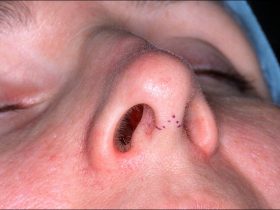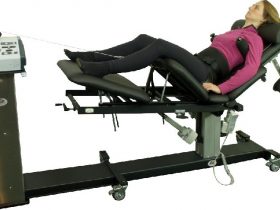For many years, small, narrow, and upturned noses were a trend; not for nothing, they were made that way since the 50s. Nowadays, people seek to preserve their identity, claim physiognomies beyond the white and western and preserve their heritage, so now surgeons use new techniques to respect as much as possible the structure and minimize the extraction.
Caution, if you are a person very sensitive to details, stop reading. But if your curiosity is much more significant and you want to know precisely how this surgery is performed, here you will find everything you need to know and maybe a couple of things you don’t.
In general terms, the skin of the nose is separated from its support, composed of cartilage and bone, which is sculpted to the desired shape; subsequently, it is redistributed on the new license. Now being a little more technical, there are two types of rhinoplasty.
- Closed rhinoplasty: using plastic surgery tools, the incisions, and surgical maneuvers are performed inside the nose so that, once completed, the scars will not be visible. Although it is more complex for the surgeon, with this technique, it is possible to do everything necessary to sculpt the nasal appendage: remove or add cartilage and bone to reduce or enlarge the size of the nose, define the straight, or curved profile, correct the tip, etc. On the other hand, this type of intervention reduces the risk of accidentally reducing the support of the nasal tip, as well as postoperative complications (edema and swelling), and favors an earlier recovery.
- Open rhinoplasty: the incisions are, in this case, external since they are made in the columella, that is to say, in the part of the nose that separates the nostrils, to expose to the surgeon’s view the internal structure of the nose, thus facilitating the surgical maneuvers. It is a little more invasive than the closed rhinoplasty technique since other internal incisions will need to be made in addition to the internal incisions. Nevertheless, the resulting external scar is practically invisible. This technique is especially indicated for correcting long or crooked noses, drooping, wide or asymmetrical tip, or the elimination of a significant curvature of the upper part of the nasal septum (aquiline nose).
Regardless of whether rhinoplasty or plastic surgery of the nose is performed using the open or closed technique, during the intervention, it is possible to resort to different methods depending on the desired shape of the nose, acting on the tip, the base of the nose, the nasal septum or the flaps. The plastic surgeon will have planned before the intervention all the details of the same and the maneuvers necessary for the nose to adopt the shape that the patient has chosen finally:
- Scraping: in this technique, the plastic surgery tools are used to file a protrusion of the nasal septum and obtain a straight nose profile.
- Spacer grafts: strips of cartilage are placed between the septum and the upper lateral cartilages, for example, to narrow, widen or lengthen the nose.
- Cephalic resection: part of the cartilage is removed from the tip of the nose to reduce its volume.
- Sutures: the shape of the nose can also be modified by performing different sutures, without the need to remove or graft any tissue, for example, to elevate the nasal tip.
- Props: rectangular pieces of cartilage are used and placed in the nasal tip to round the shape of the nose.
- Tip grafts: the patient’s cartilage is used to correct the shape of the nasal tip or lengthen the nasal appendage.
- Base resection: used to reduce the width of the nasal base and obtain a thinner and smaller nose, which may require the removal of part of the lower nostril.
- Volumizing grafts are pieces of cartilage placed at the junction of the nose and upper lip to correct an excessively acute angle at the nasal base.
- Osteotomy: involves breaking the nasal bones, which is sometimes necessary to narrow the nose or correct a deviation of the nose on the axis resulting in a loss of symmetry.










